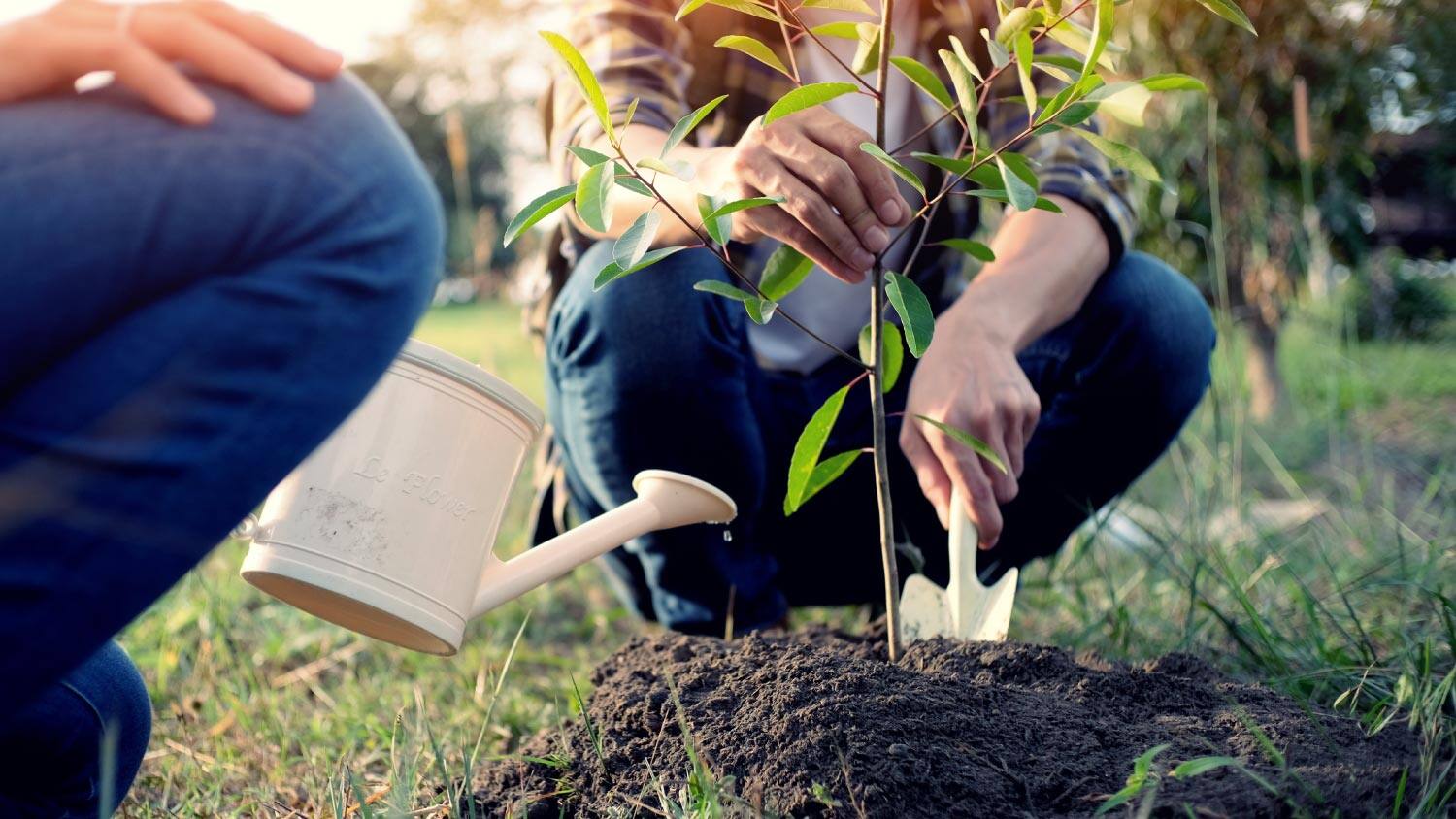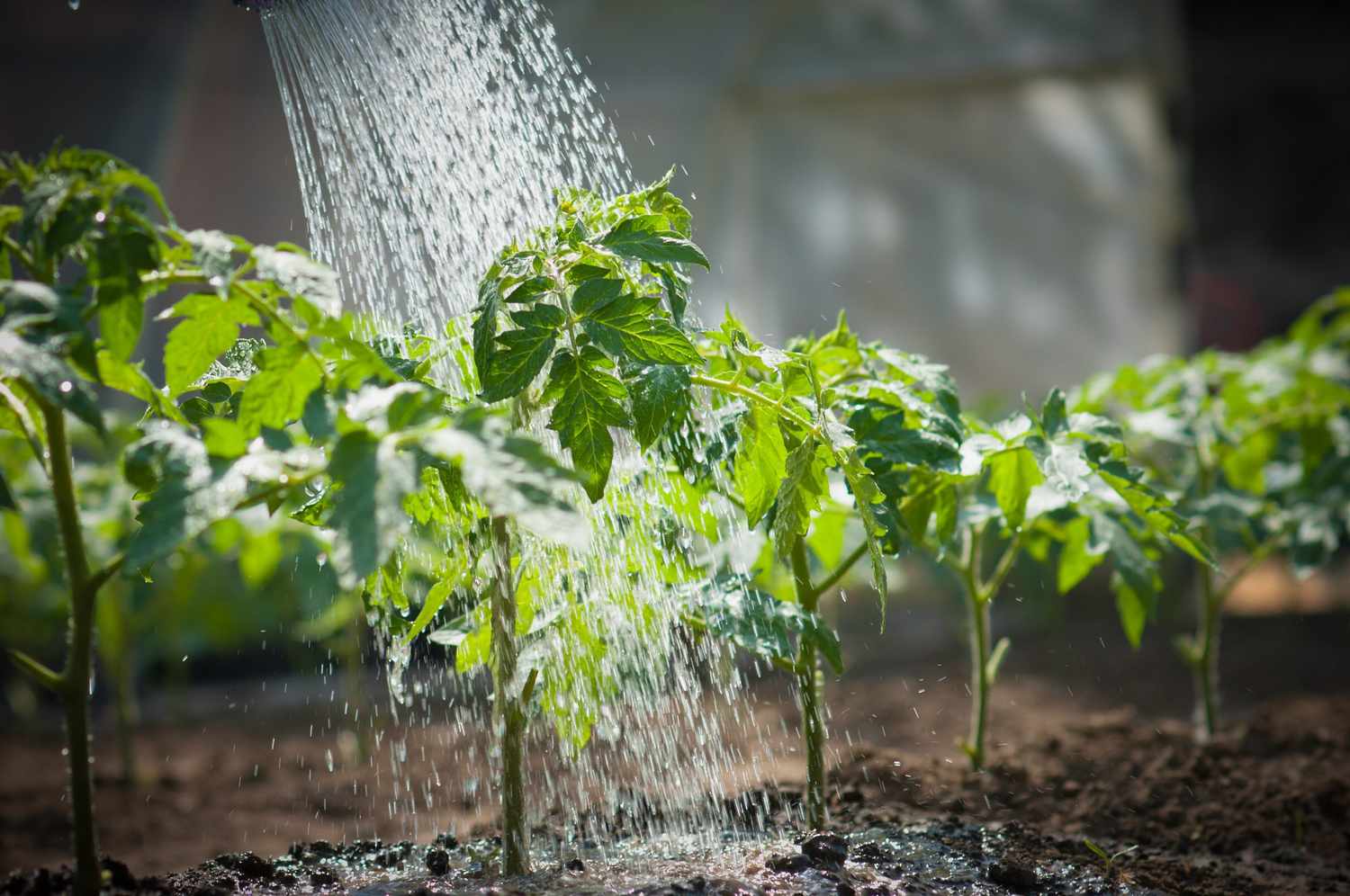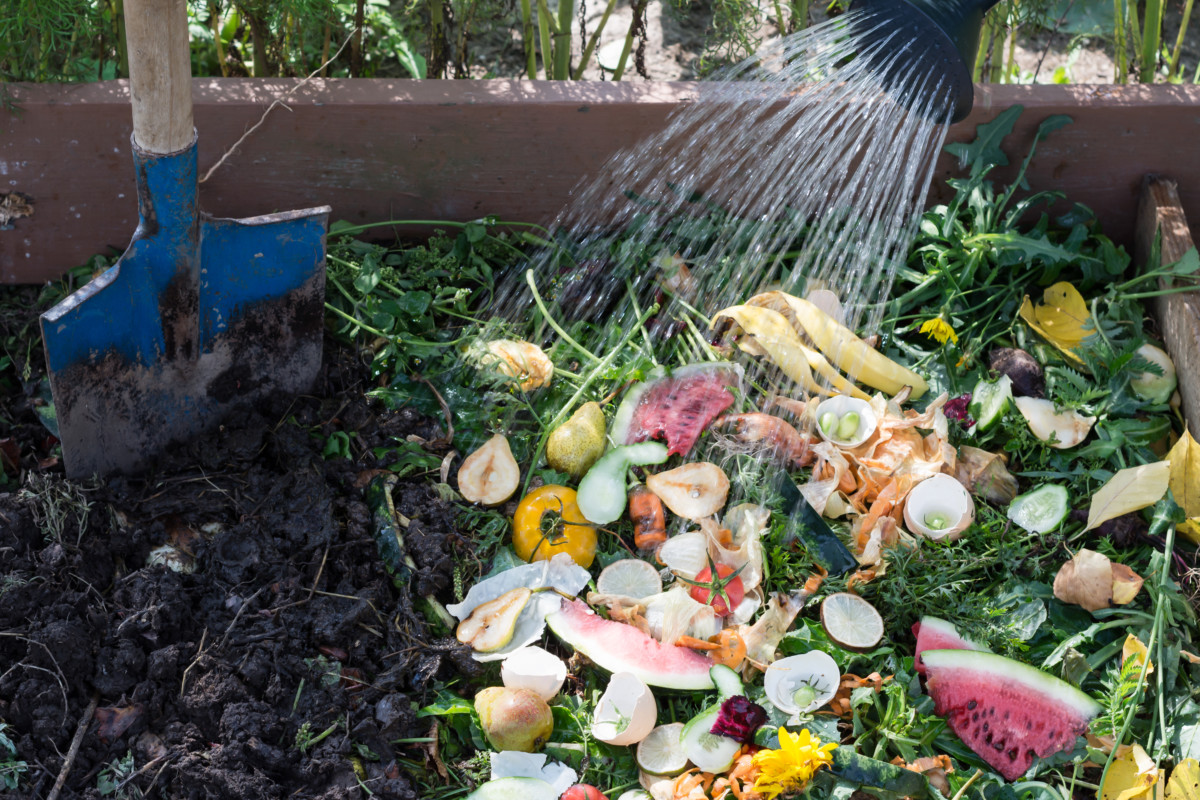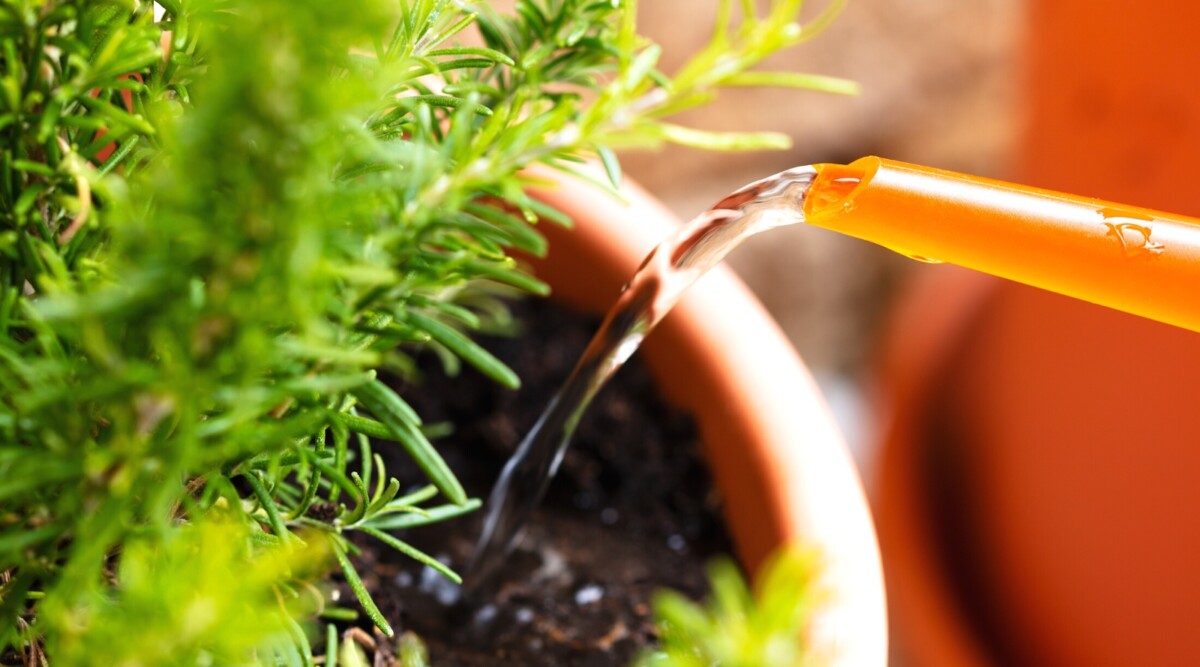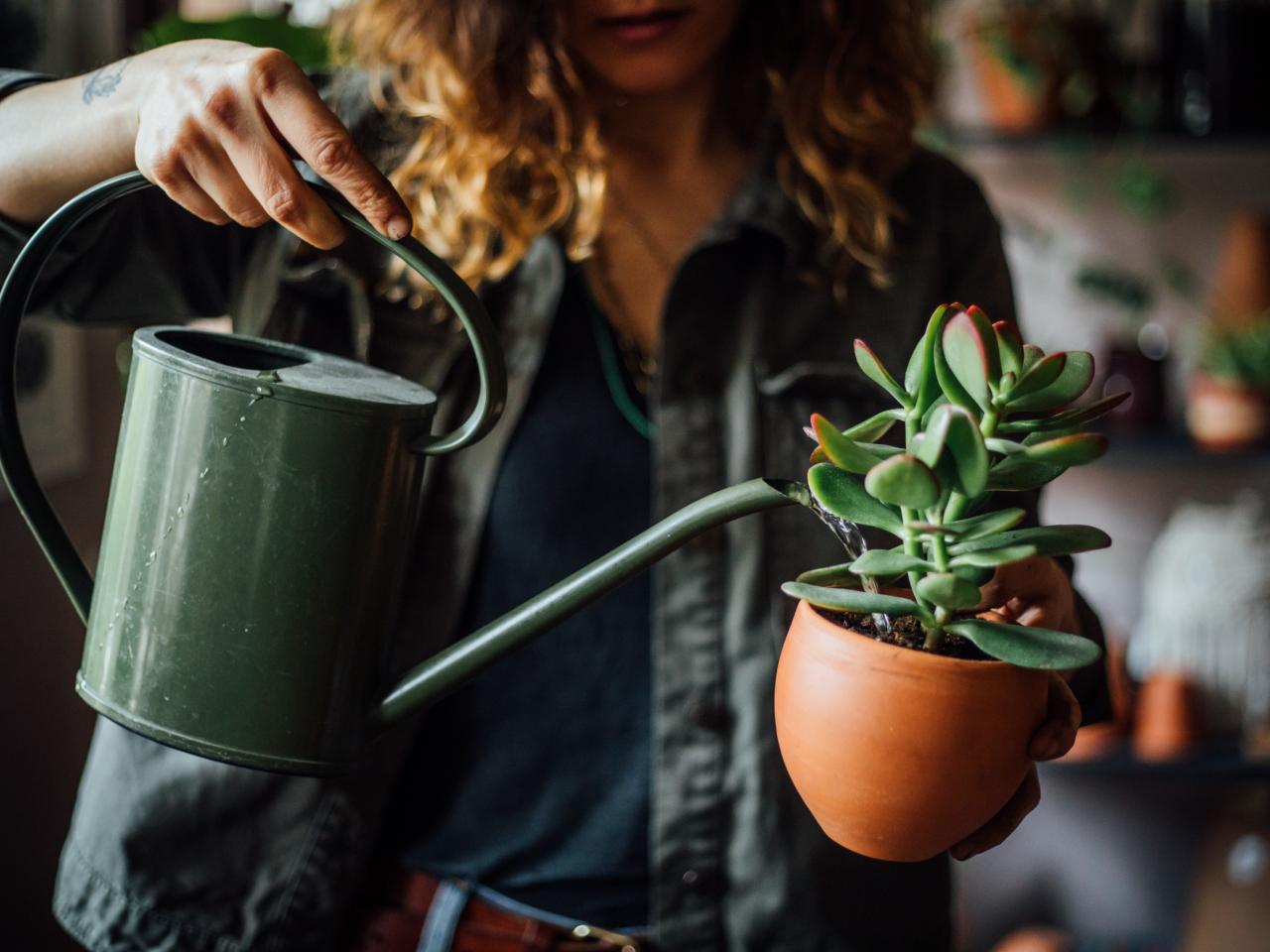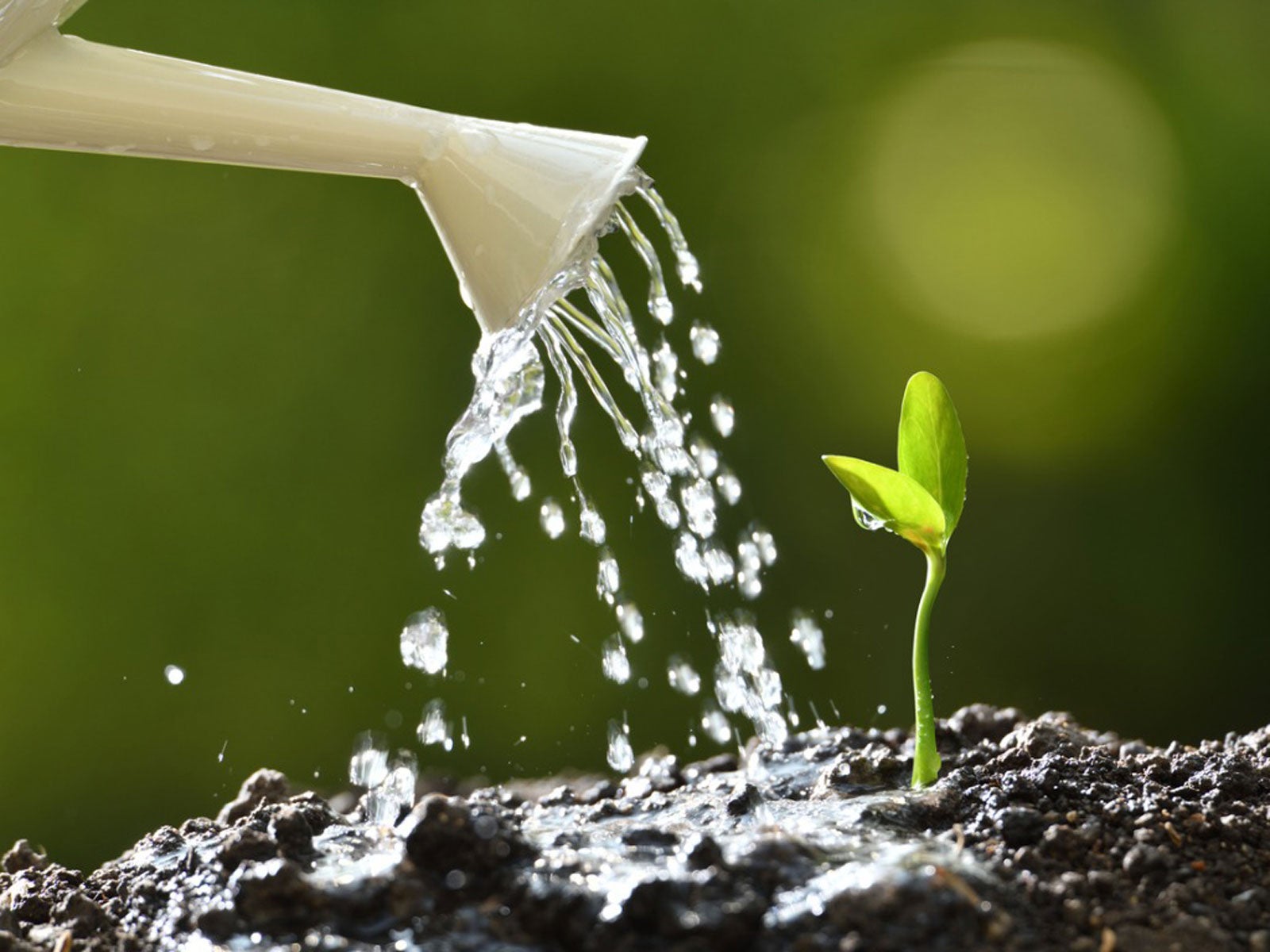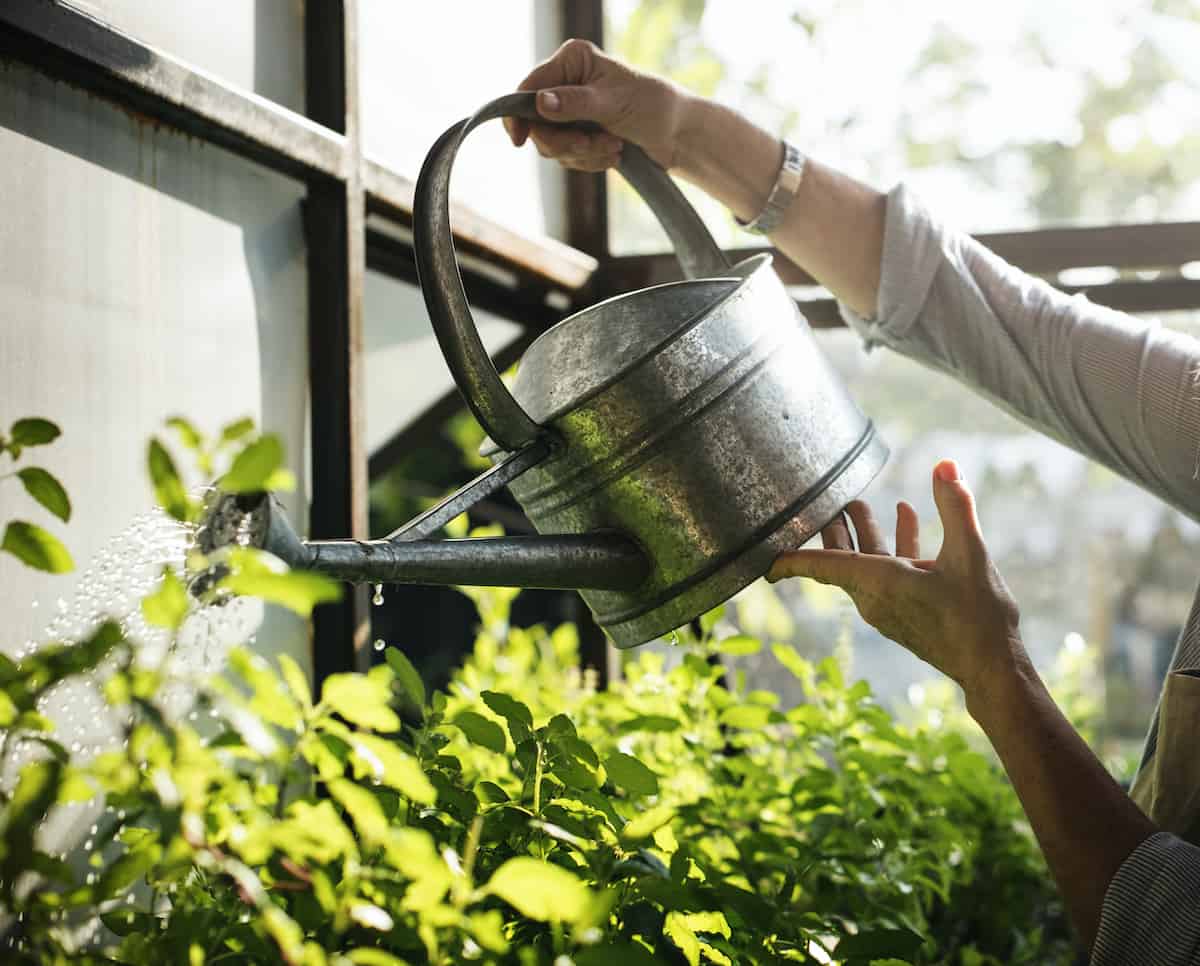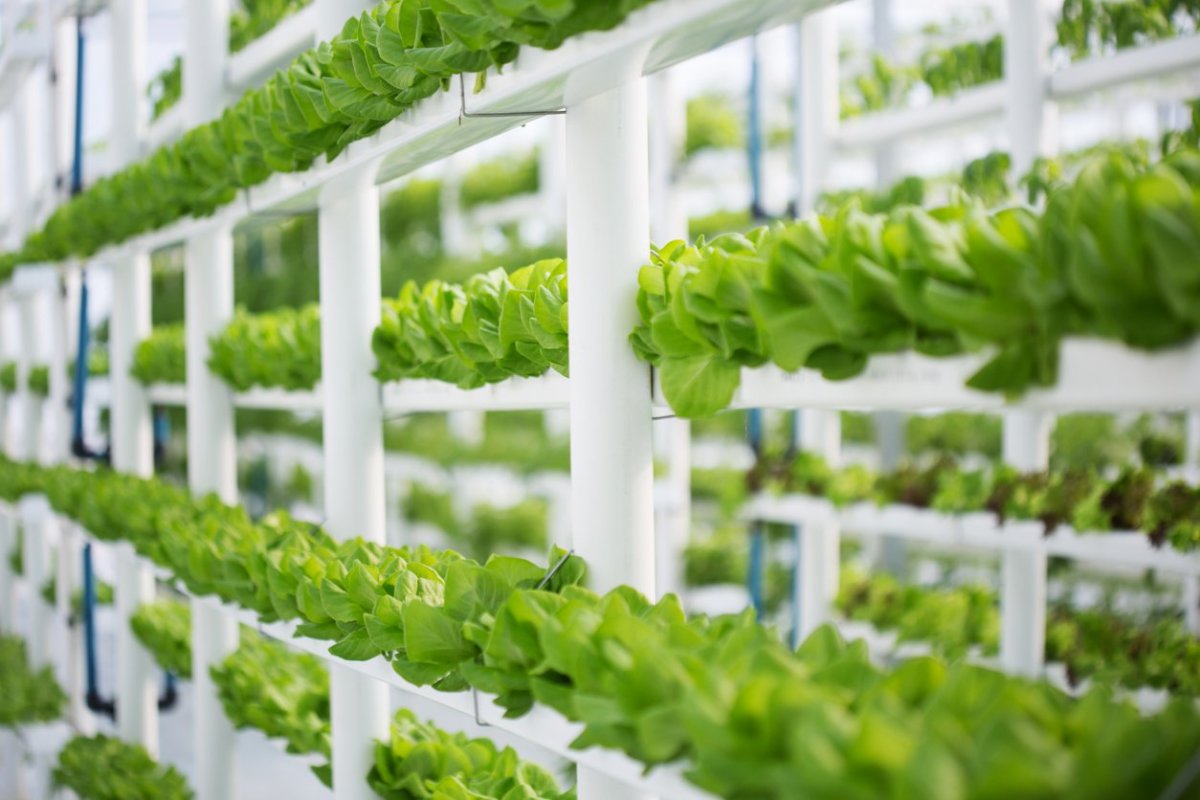Home>Gardening Techniques>Plant Care>How Often To Water Bulbs After Planting


Plant Care
How Often To Water Bulbs After Planting
Published: January 23, 2024
Learn the best plant care tips for watering bulbs after planting. Discover how often to water bulbs to ensure healthy growth and blooming.
(Many of the links in this article redirect to a specific reviewed product. Your purchase of these products through affiliate links helps to generate commission for Chicagolandgardening.com, at no extra cost. Learn more)
Table of Contents
Introduction
Welcome to the wonderful world of bulb gardening! Whether you're a seasoned green thumb or just starting your journey as a plant enthusiast, understanding the watering needs of bulbs is essential for their overall health and vibrancy. Bulbs, such as tulips, daffodils, and lilies, are renowned for their stunning blooms and relatively low maintenance. However, achieving the best results with these plants requires a nuanced understanding of their watering requirements.
In this comprehensive guide, we will delve into the art and science of watering bulbs after planting. From the frequency of watering for newly planted bulbs to the signs of overwatering and underwatering, we'll cover everything you need to know to ensure the flourishing of your bulb garden. Additionally, we'll provide practical tips for proper bulb watering, empowering you to nurture a thriving and colorful bulb display.
Understanding how often to water bulbs after planting is crucial for their successful establishment and long-term growth. By mastering the art of bulb watering, you can create a captivating garden filled with an array of vibrant blooms that will delight your senses and uplift your outdoor space. So, let's embark on this horticultural journey together and unlock the secrets to nurturing healthy, radiant bulbs through proper watering techniques.
Understanding Bulb Watering Needs
Before delving into the specifics of how often to water bulbs after planting, it’s essential to grasp the fundamental watering needs of these underground wonders. Bulbs are unique structures that store nutrients and moisture to support the growth of their future blooms. During their dormant period, bulbs rely on reserves stored within their fleshy scales or layers to sustain them through adverse conditions, such as winter cold or dry spells.
When bulbs are planted, they undergo a transition from dormancy to active growth, signaling the beginning of their water-dependent phase. As the roots develop and the shoots emerge, the demand for water increases, fueling the bulb’s transformation into a flowering spectacle. Understanding this transition is pivotal in determining the appropriate watering regimen for bulbs, as it directly impacts their ability to thrive and produce stunning blossoms.
Furthermore, the type of soil in which bulbs are planted plays a significant role in their watering requirements. Well-draining soil, enriched with organic matter, allows for adequate moisture retention while preventing waterlogged conditions that can lead to bulb rot. Conversely, heavy or clay-like soils may necessitate adjusted watering practices to prevent water from pooling around the bulbs, which can impede their growth and overall health.
By comprehending the unique physiology of bulbs and the influence of soil composition on their water uptake, gardeners can tailor their watering approach to meet the specific needs of these underground gems. This understanding forms the cornerstone of effective bulb care, setting the stage for successful cultivation and a bountiful display of floral beauty.
Watering Frequency for Newly Planted Bulbs
After carefully tucking newly planted bulbs into the soil, it’s crucial to establish an appropriate watering routine to support their initial growth and development. During this critical phase, the bulbs are acclimating to their new environment and initiating root establishment, making consistent moisture essential for their successful transition from dormancy to active growth.
Upon planting, it’s advisable to provide a thorough initial watering to settle the soil and kickstart the bulb’s awakening process. This initial hydration aids in hydrating the bulb and surrounding soil, facilitating the emergence of roots and shoots. Subsequently, the frequency of watering newly planted bulbs should be guided by the prevailing weather conditions and soil moisture levels.
In regions with moderate temperatures and regular rainfall, monitoring the soil moisture is paramount. If the soil feels dry to the touch, it’s a cue to provide supplemental watering to ensure the bulbs receive adequate moisture. However, it’s essential to strike a balance and avoid overwatering, as excessively wet soil can lead to bulb rot and other detrimental issues.
Conversely, in drier climates or during periods of limited rainfall, diligent attention to the soil moisture becomes even more critical. Regularly checking the soil for dryness and adjusting the watering frequency accordingly is essential for sustaining the bulbs during their early stages of growth. Additionally, applying a layer of organic mulch around the newly planted bulbs can help conserve soil moisture and regulate temperature fluctuations, promoting a conducive environment for their development.
As a general guideline, newly planted bulbs may require consistent moisture, but it’s imperative to allow the soil to partially dry out between watering sessions to prevent waterlogged conditions. This approach encourages the development of robust root systems while minimizing the risk of fungal diseases associated with overly damp soil.
By tailoring the watering frequency to the specific needs of newly planted bulbs and remaining attentive to environmental factors, gardeners can nurture healthy and resilient bulbs that are primed for a spectacular display of blooms in the coming seasons.
Watering Frequency for Established Bulbs
Once bulbs have transitioned from their initial planting phase to becoming established in the garden, their watering needs evolve to accommodate their ongoing growth and blooming cycles. Established bulbs, having developed robust root systems and acclimated to their surroundings, exhibit different watering requirements compared to newly planted bulbs.
During the growing season, the watering frequency for established bulbs is influenced by various factors, including weather patterns, soil composition, and the specific needs of the bulb varieties in the garden. In regions with consistent rainfall and moderate temperatures, established bulbs may rely primarily on natural precipitation, supplemented by occasional watering during prolonged dry spells.
Conversely, in areas characterized by arid conditions or irregular rainfall, proactive watering becomes essential to sustain the vigor and vitality of established bulbs. Regularly monitoring the soil moisture and providing supplemental watering when necessary is crucial for ensuring the bulbs receive adequate hydration to support their foliage growth and flower production.
One effective method of determining the need for watering established bulbs is to assess the soil moisture level. By inserting a finger or a soil moisture probe into the soil near the bulbs, gardeners can gauge the moisture content and adjust their watering schedule accordingly. It’s important to strike a balance, ensuring that the soil remains consistently moist but not waterlogged, as excessive moisture can lead to root rot and other detrimental issues.
Furthermore, the timing of watering plays a key role in optimizing the uptake of moisture by established bulbs. Watering in the early morning allows the bulbs to absorb moisture before the heat of the day, reducing the risk of evaporation and ensuring efficient utilization of the water provided. This practice also minimizes the likelihood of fungal diseases, as the foliage has the opportunity to dry off during the day.
As the growing season progresses and the bulbs transition into their dormancy phase, the watering frequency can be gradually reduced to align with their decreased metabolic activity. This adjustment reflects the natural cycle of the bulbs and helps prepare them for the dormant period, during which they rely on stored reserves rather than active water uptake.
By adapting the watering frequency to the specific needs of established bulbs and remaining attentive to environmental cues, gardeners can foster the continued health and vitality of their bulb garden, ensuring a stunning display of blooms year after year.
Signs of Overwatering and Underwatering
Recognizing the signs of overwatering and underwatering is essential for maintaining the health and vigor of bulb plants. Both conditions can have detrimental effects on the growth, blooming, and overall well-being of bulbs, making it crucial for gardeners to be vigilant and responsive to the signals that indicate imbalanced moisture levels in the soil.
Signs of Overwatering
Overwatering can lead to a host of issues for bulbs, including root rot, fungal diseases, and diminished vitality. One of the primary indicators of overwatering is waterlogged soil, which may emit a foul odor and appear excessively wet. Additionally, the foliage of overwatered bulbs may exhibit yellowing, wilting, or a general lack of vigor, signaling the stress imposed by the waterlogged conditions.
Another telltale sign of overwatering is the presence of mold or mildew on the soil surface, which can develop in response to persistent moisture and poor air circulation. Bulbs suffering from overwatering may also display stunted growth, as the excessive moisture impedes the uptake of essential nutrients and oxygen, hindering their overall development.
Signs of Underwatering
Conversely, underwatering can manifest through distinct symptoms that warrant prompt attention. Bulbs experiencing insufficient moisture may exhibit wilting, yellowing, or browning of their foliage, signaling their distress. The soil surrounding underwatered bulbs may appear dry and dusty, and the bulbs themselves may become desiccated and shriveled due to the lack of hydration.
Furthermore, during periods of prolonged drought or inadequate watering, established bulbs may produce fewer or smaller blooms, as their limited access to moisture hampers their capacity to generate robust flowers. The overall growth and vitality of underwatered bulbs may also be compromised, impacting their ability to thrive and endure adverse conditions.
Responsive Measures
When confronted with signs of overwatering or underwatering, prompt action is essential to mitigate the detrimental effects and restore the optimal moisture balance for the bulbs. For overwatered bulbs, allowing the soil to dry out and improving drainage can help alleviate the waterlogged conditions and prevent further damage. In contrast, underwatered bulbs benefit from supplemental watering to replenish their moisture levels and support their recovery.
By closely monitoring the signs of overwatering and underwatering, gardeners can implement targeted interventions to rectify the moisture imbalance, safeguarding the health and vitality of their cherished bulb plants.
Tips for Proper Bulb Watering
Mastering the art of proper bulb watering is fundamental to nurturing healthy, vibrant bulbs that flourish year after year. By incorporating these expert tips into your bulb care routine, you can optimize the moisture management for your bulbs, ensuring their sustained growth and the abundant production of stunning blooms.
1. Watering Depth and Coverage
When watering bulbs, it’s essential to ensure that the moisture penetrates the soil to reach the root zone where the bulbs are actively growing. Watering to a sufficient depth encourages the development of robust root systems and supports the bulbs’ overall health. Additionally, providing uniform coverage across the planting area helps maintain consistent moisture levels and promotes even growth among the bulbs.
2. Mulching Benefits
Applying a layer of organic mulch, such as shredded bark or compost, around the bulbs offers numerous advantages for moisture retention and temperature regulation. Mulch helps conserve soil moisture by reducing evaporation and insulating the soil, thereby promoting a stable and conducive environment for the bulbs’ growth. Furthermore, mulch serves as a protective barrier, shielding the bulbs from temperature extremes and minimizing fluctuations that can impact their water uptake.
3. Watering Schedule
Establishing a consistent watering schedule, tailored to the specific needs of the bulbs and guided by environmental factors, is crucial for maintaining optimal soil moisture. Whether based on a weekly routine or dictated by the prevailing weather conditions, a well-defined watering schedule promotes the sustained hydration of the bulbs and supports their growth without subjecting them to excessive moisture or prolonged dry spells.
4. Soil Drainage Considerations
Assessing the drainage capacity of the soil in which the bulbs are planted is pivotal for preventing waterlogged conditions that can compromise their health. Well-draining soil, enriched with organic matter, facilitates proper water infiltration and prevents stagnation, reducing the risk of root rot and other moisture-related issues. In cases where the soil’s drainage is inadequate, amending it with organic materials or creating raised beds can improve the overall drainage and aeration, benefiting the bulbs.
5. Morning Watering Practices
Opting to water bulbs in the early morning hours offers several advantages, including maximizing the uptake of moisture by the bulbs before the onset of daytime heat. Morning watering reduces the risk of evaporation, ensuring that the moisture remains available to the bulbs and minimizing the likelihood of fungal diseases associated with prolonged leaf wetness. Additionally, morning watering allows the foliage to dry off during the day, promoting a healthier growing environment for the bulbs.
By integrating these expert tips into your bulb care regimen, you can elevate your gardening practices and cultivate thriving bulbs that reward you with a breathtaking display of blossoms each season.
Conclusion
Embarking on the journey of bulb gardening unveils a world of natural beauty and horticultural wonder, where the art of proper watering plays a pivotal role in nurturing flourishing bulbs. Understanding the nuanced watering needs of bulbs, from the initial planting phase to their establishment and beyond, empowers gardeners to cultivate vibrant displays of blooms and sustain the long-term health of these underground treasures.
By comprehending the transition of bulbs from dormancy to active growth and considering the impact of soil composition on their water uptake, gardeners can tailor their watering practices to meet the specific needs of these botanical gems. Whether tending to newly planted bulbs or established specimens, the art of balancing moisture levels in the soil is essential for fostering robust root systems, lush foliage, and bountiful blossoms.
Recognizing the signs of overwatering and underwatering equips gardeners with the insights needed to respond proactively and restore the optimal moisture balance for their bulbs. By observing the visual cues and implementing targeted measures, gardeners can safeguard their bulbs from the detrimental effects of imbalanced moisture and promote their continued vitality.
Incorporating expert tips for proper bulb watering, such as ensuring adequate watering depth, leveraging the benefits of mulching, establishing a consistent watering schedule, and considering soil drainage, empowers gardeners to elevate their bulb care practices. By embracing morning watering practices and optimizing the coverage and depth of watering, gardeners can create an environment that supports the sustained growth and blooming potential of their cherished bulbs.
As you tend to your bulb garden, remember that the art of proper watering is a harmonious blend of science and intuition, where attentive observation and responsive care converge to create an environment conducive to the flourishing of bulbs. With these insights and practices at your disposal, you are poised to embark on a journey of nurturing radiant bulbs that grace your garden with a kaleidoscope of colors and enchanting blooms, season after season.
